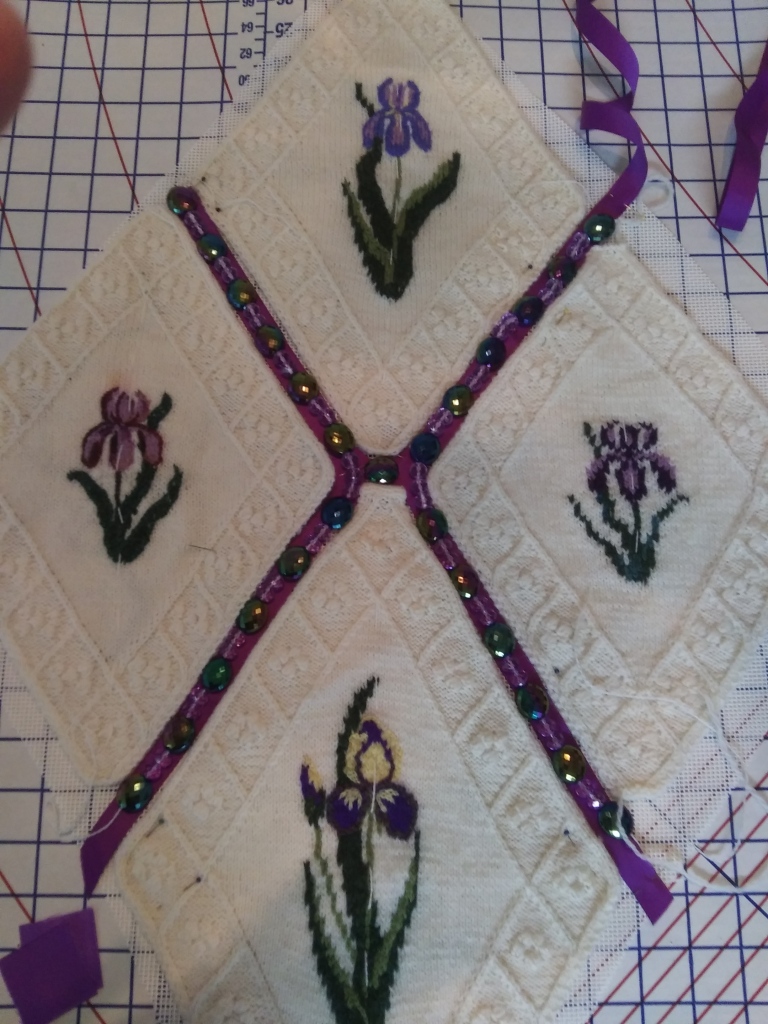
When my grand-daughter visited me this last year, we went through some of the things I had stuck back in my craft boxes. Among the fines were these swatches I had made while learning to design and create knitted pictures. The one on the right was the first Iris I tried my hand at, using my friends cross-stitch design. The left one, was my first upgrade, as I added edging with lace yarn. The top was an attempt at more detail, and the center bottom was the realistic version.
Of course, she wanted them. The problem was how to put them together in an attractive collage she could hang on the wall.

The Solution
I purchased plastic netting, ribbon, and beads. The plan is to attach the ribbon, add the beads, then secure the blocks to the netting. When finished, I will trim the plastic back and crochet the edges together. I might even add a decorative edging if I feel it necessary. I will insert a ring in the top when crocheting the edge.
I will post the finished work, so you can see the results. The first pic above is just a layout, now the work begins.





















